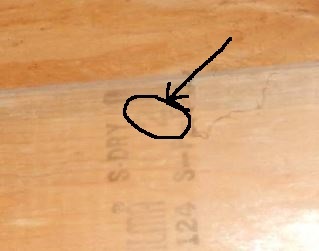2457F
Structural
- Jun 23, 2011
- 25
Trying to determine the capacity of some wood i-joist. I have attached a sketch and some photos. The cross-section does not match any wood i-joists from any manufacturer's catalogs. Ultimately trying to post a sign that will indicate the maximum live load. Any ideas? I've never seen 2x4's fastened at the bottom and top chords as can be seen in the photos.

![[idea] [idea] [idea]](/data/assets/smilies/idea.gif)
![[r2d2] [r2d2] [r2d2]](/data/assets/smilies/r2d2.gif)

![[yoda] [yoda] [yoda]](/data/assets/smilies/yoda.gif)